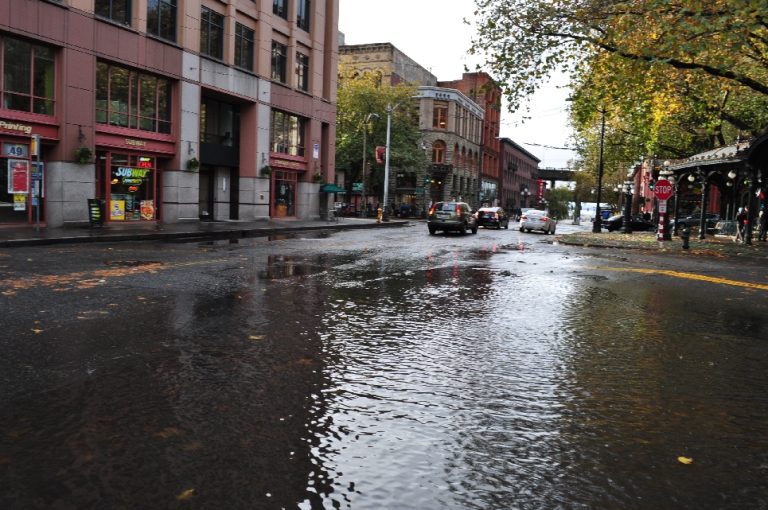Published on August 20, 2024

Reported by Stéphane Blais for La Presse Canadienne and the Toronto Sun.
Pilot projects are being developed across Quebec to make parking lots, bike paths or portions of streets more resilient to climate change.
To make cities more resilient to flooding caused by climate change, researchers are developing more permeable pavements to allow water to flow through streets instead of running off the surface and ending up in residential basements.
This is happening more and more in Quebec: torrential rains overload underground networks that are not able to deal with such large quantities of water. Then the sewers back up, the streets are transformed into swimming pools and homes are flooded.
To make cities more resilient to climate change, one idea is to allow rainwater to infiltrate the ground without passing through underground networks by making parking lots, sidewalks and streets more permeable, for example.
Beyond nature-based solutions such as sponge sidewalks, “porous concrete,” or “permeable asphalt” or “pavers with permeable joints” are all types of pavements that can be used to make cities more resilient to flooding, said Sophie Duchesne, a professor at INRS and specialist in urban water management.
However, it’s easier to make a parking lot or bike path permeable than a street or boulevard, because of what lies beneath the pavement.
“When you use a permeable surface, you still have to send the water somewhere, so you need a pavement underneath that will be able to store the water” and often in the streets, under the pavement, you have water pipes, gas pipes, sewer pipes, which complicates water storage, said Duchesne, who works with municipalities to help them manage stormwater.
In some places in the U.S., alternatives to traditional road surfaces, such as pervious concrete, are gaining in popularity, according to Nara Almeida, a researcher and assistant professor at the University of Washington.
“I live in Washington State (…) and here it’s a very popular material, you can use it for sidewalks, but it can also be very effective for low-traffic streets,” explained Almeida, whose research focuses on sustainable materials for pavement manufacture.
“However, one of the difficulties in applying it to roads with heavy traffic is permeable concrete is not as strong as traditional concrete and cannot be reinforced,” Almeida said.
Reinforced concrete roads, built for heavy traffic, are made up of steel rods to reinforce the structure.
“But you can’t use steel in permeable concrete roads, because water will cause oxidation”, Almeida, explained, adding she is currently studying different materials that could make permeable concrete stronger.
According to this U.S. researcher, one of the indirect benefits of this type of pavement is it filters contaminants present in stormwater runoff.
“All kinds of pollution are found in stormwater runoff, for example, pollution caused by vehicle’s tires, and runoff water can carry this pollution into rivers, lakes, even all the way to the ocean”, but permeable concrete captures and filters out some of these pollutants.
Continue reading here.
To make cities more resilient to flooding caused by climate change, researchers are developing more permeable pavements.